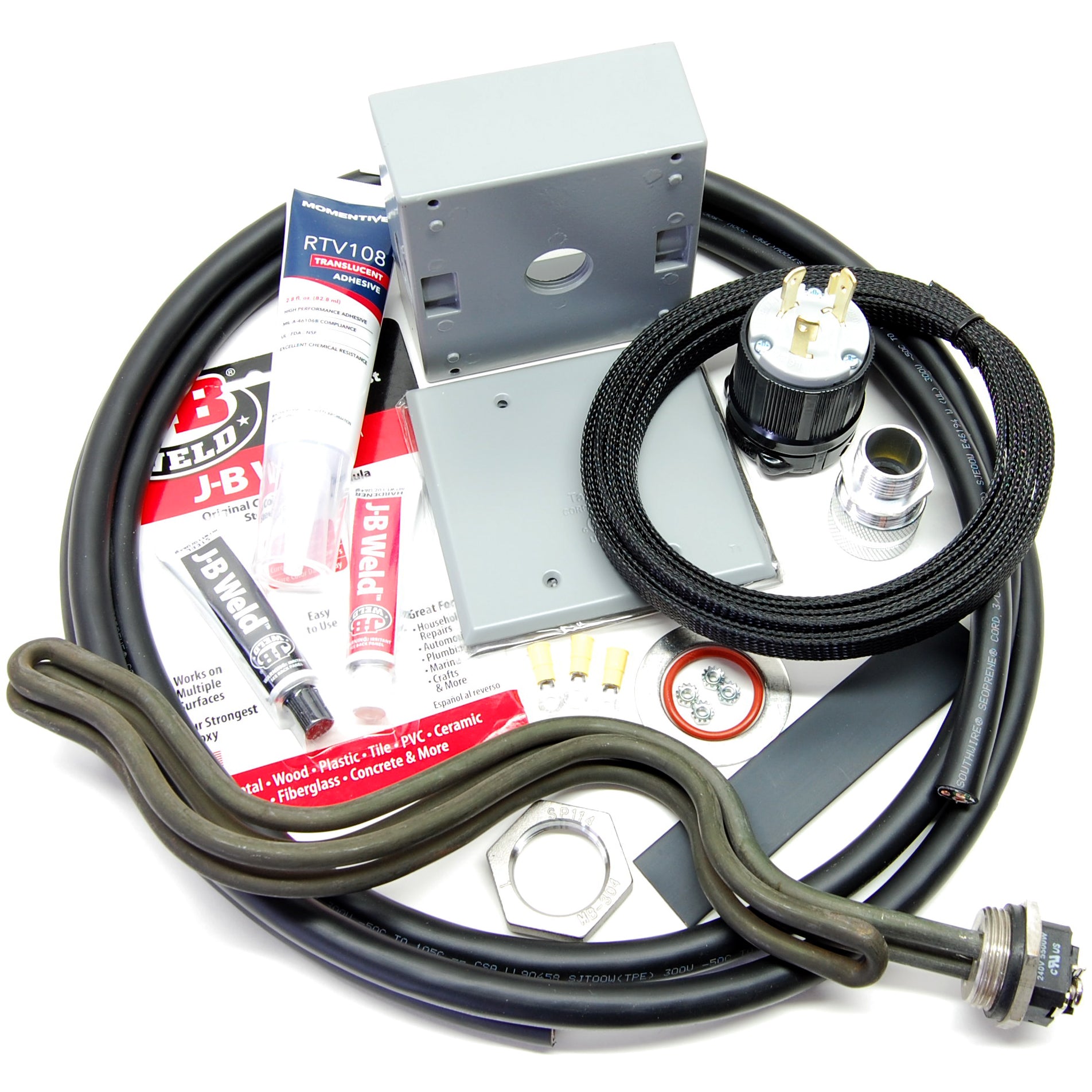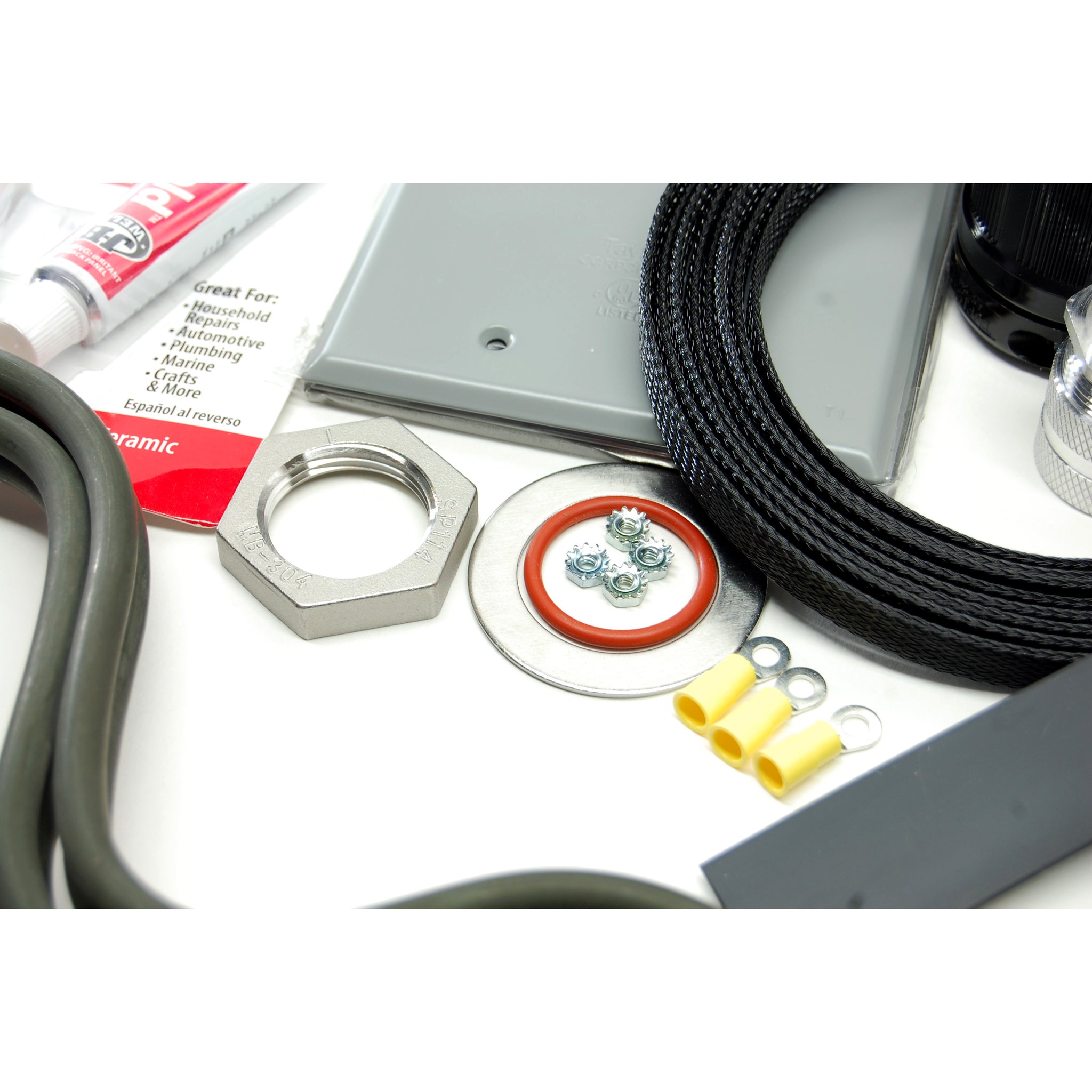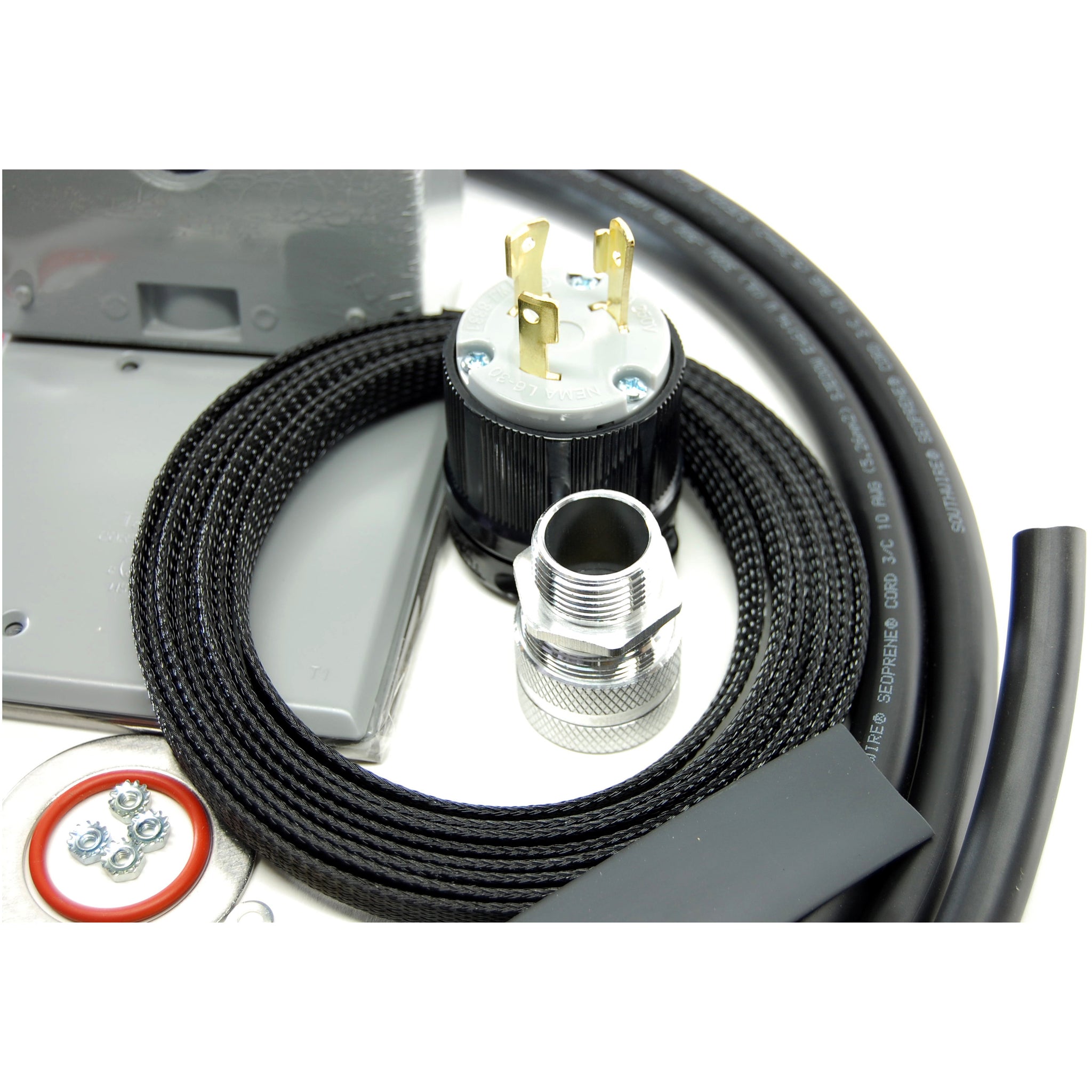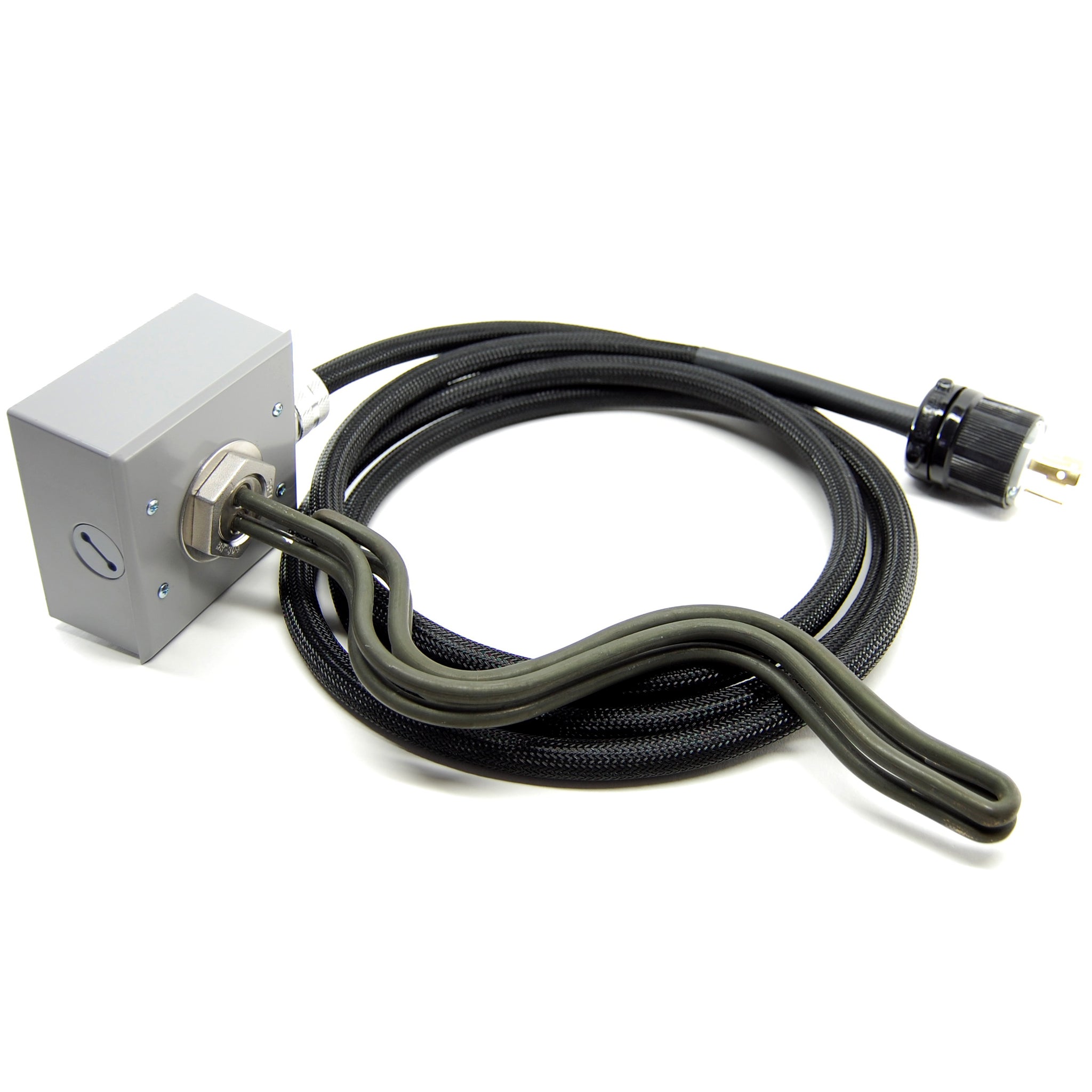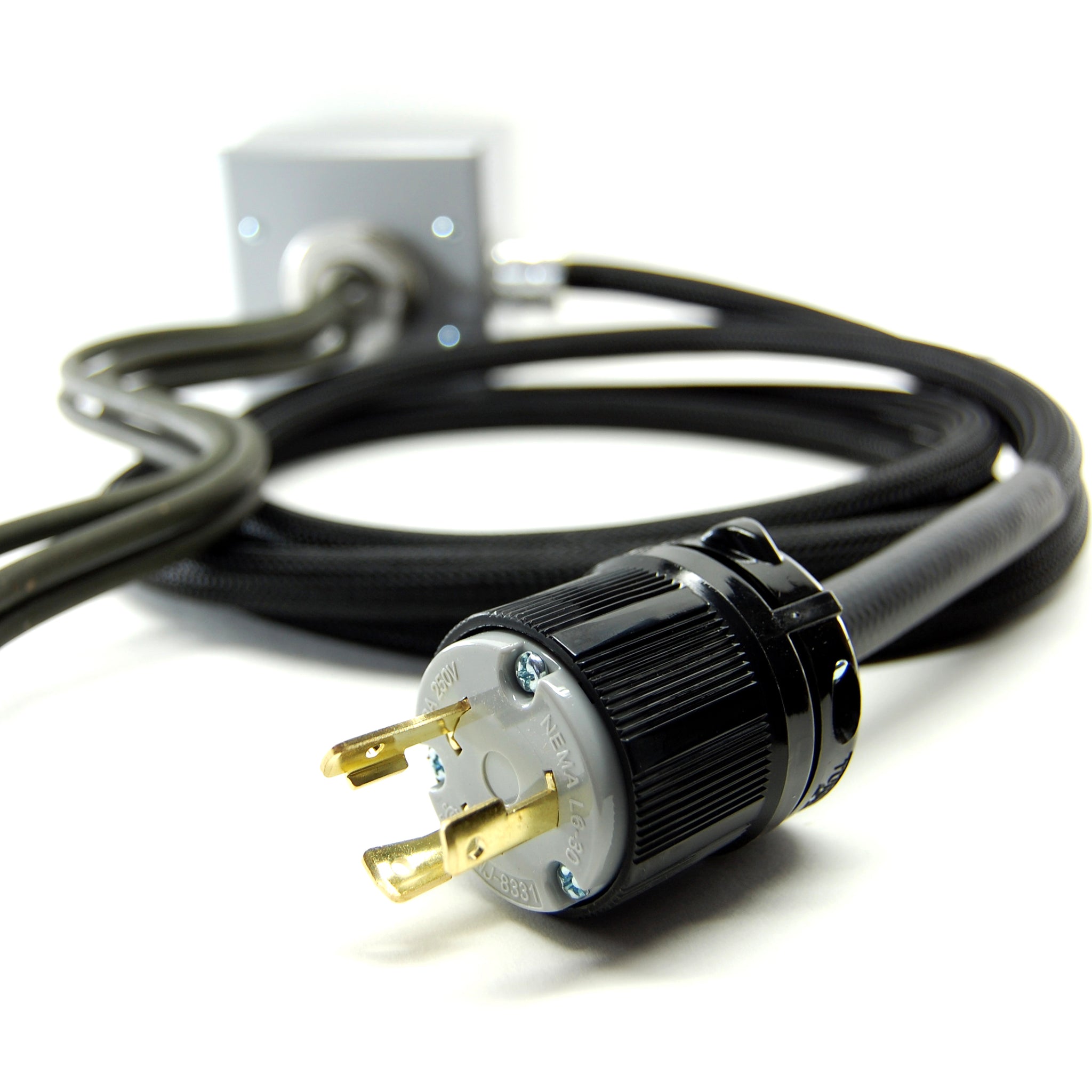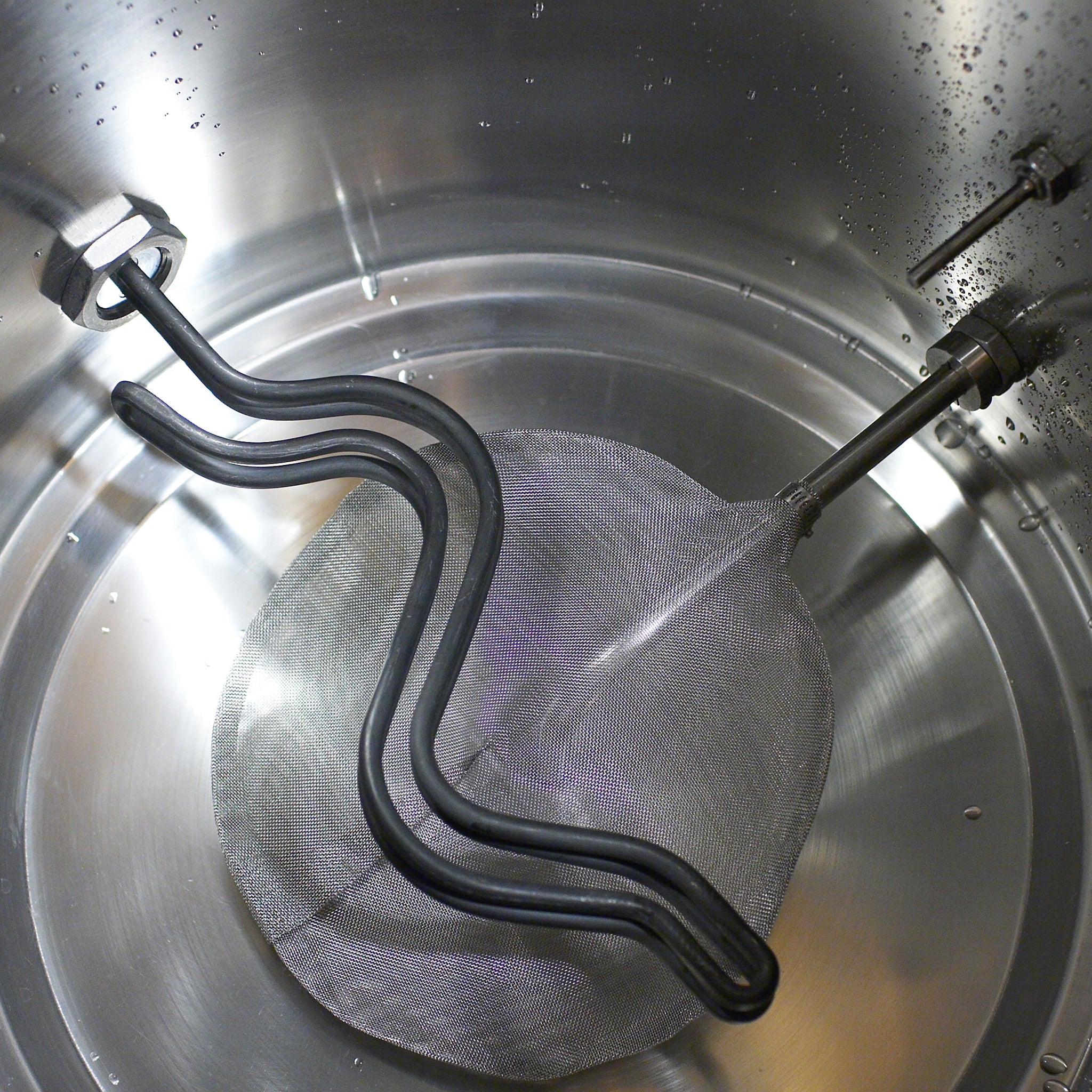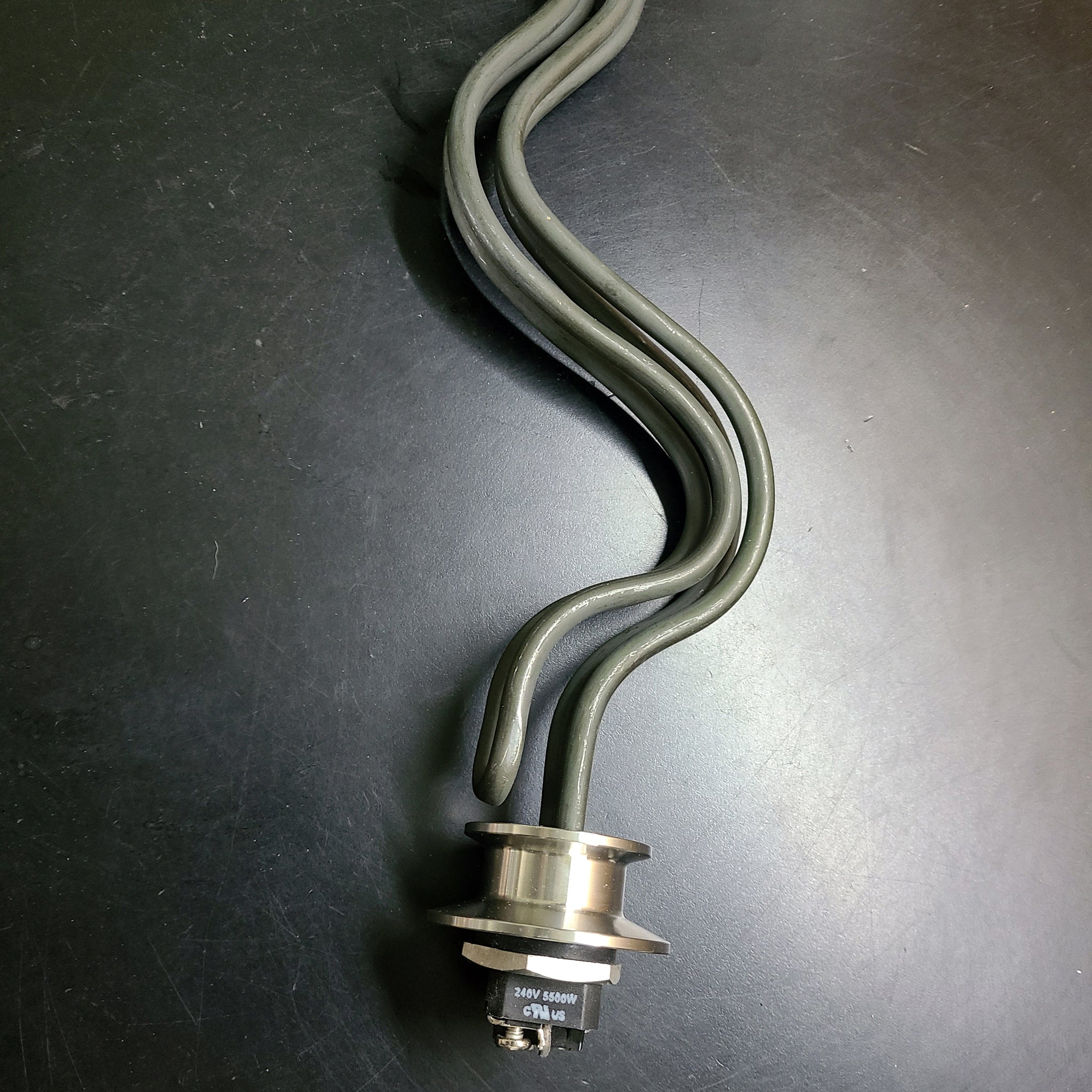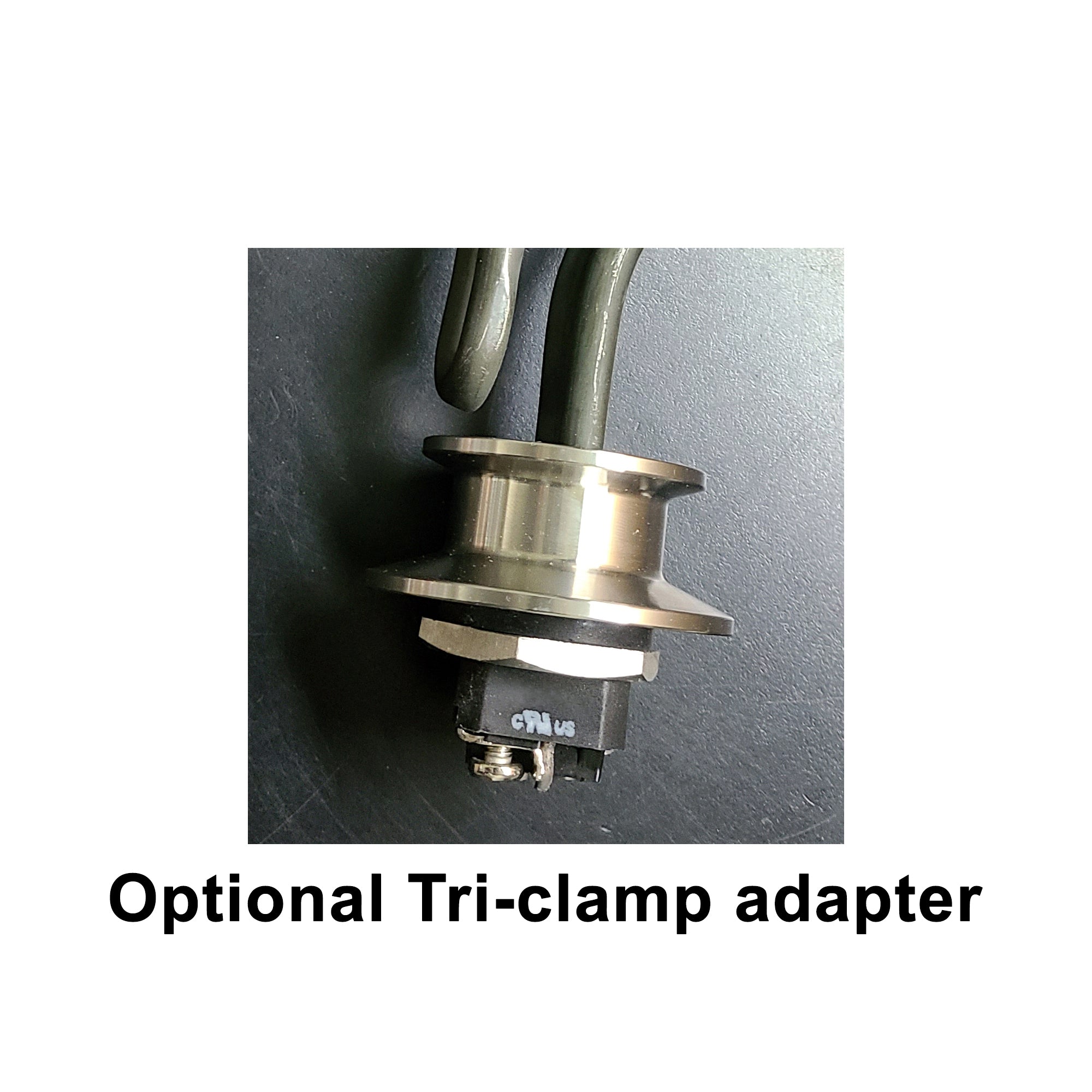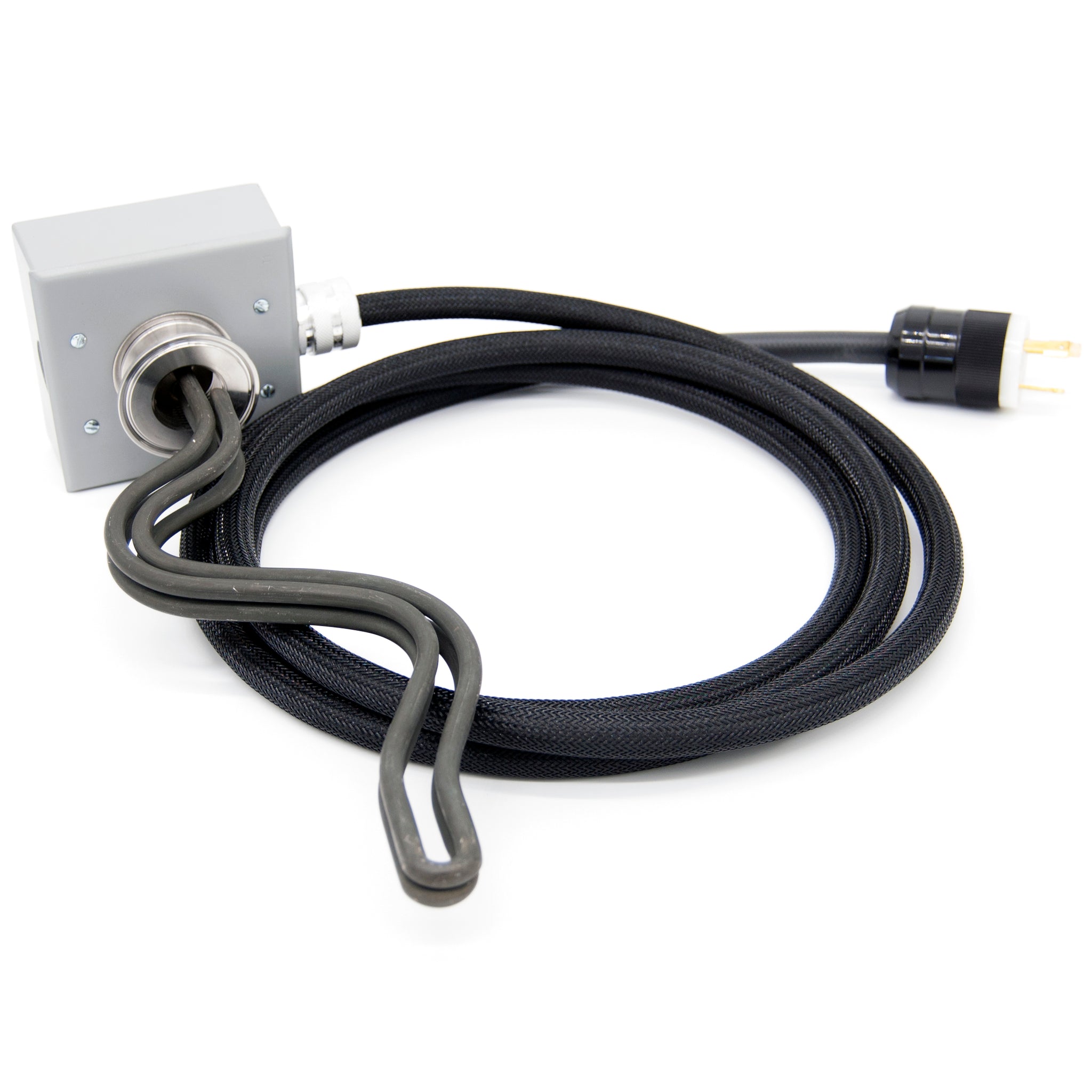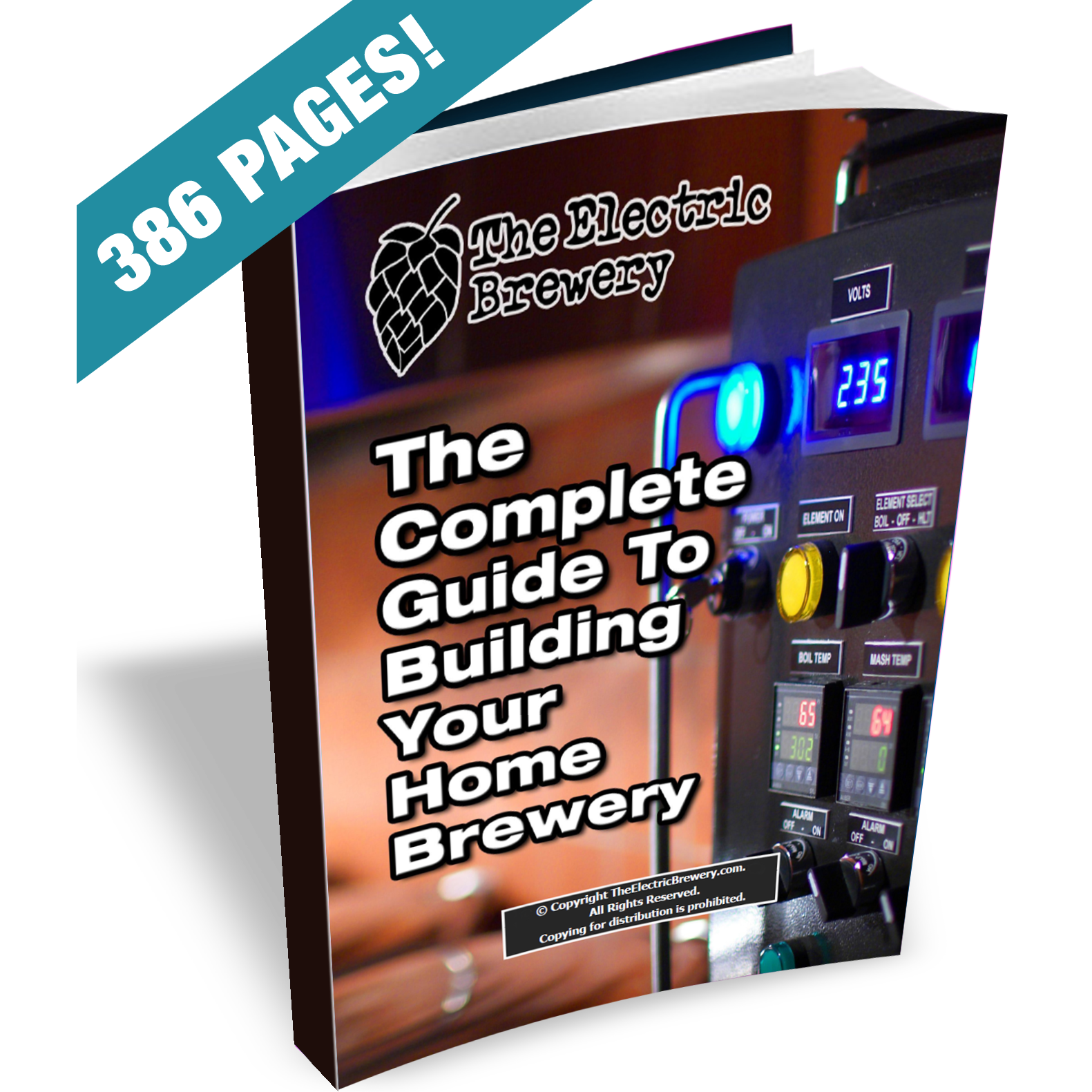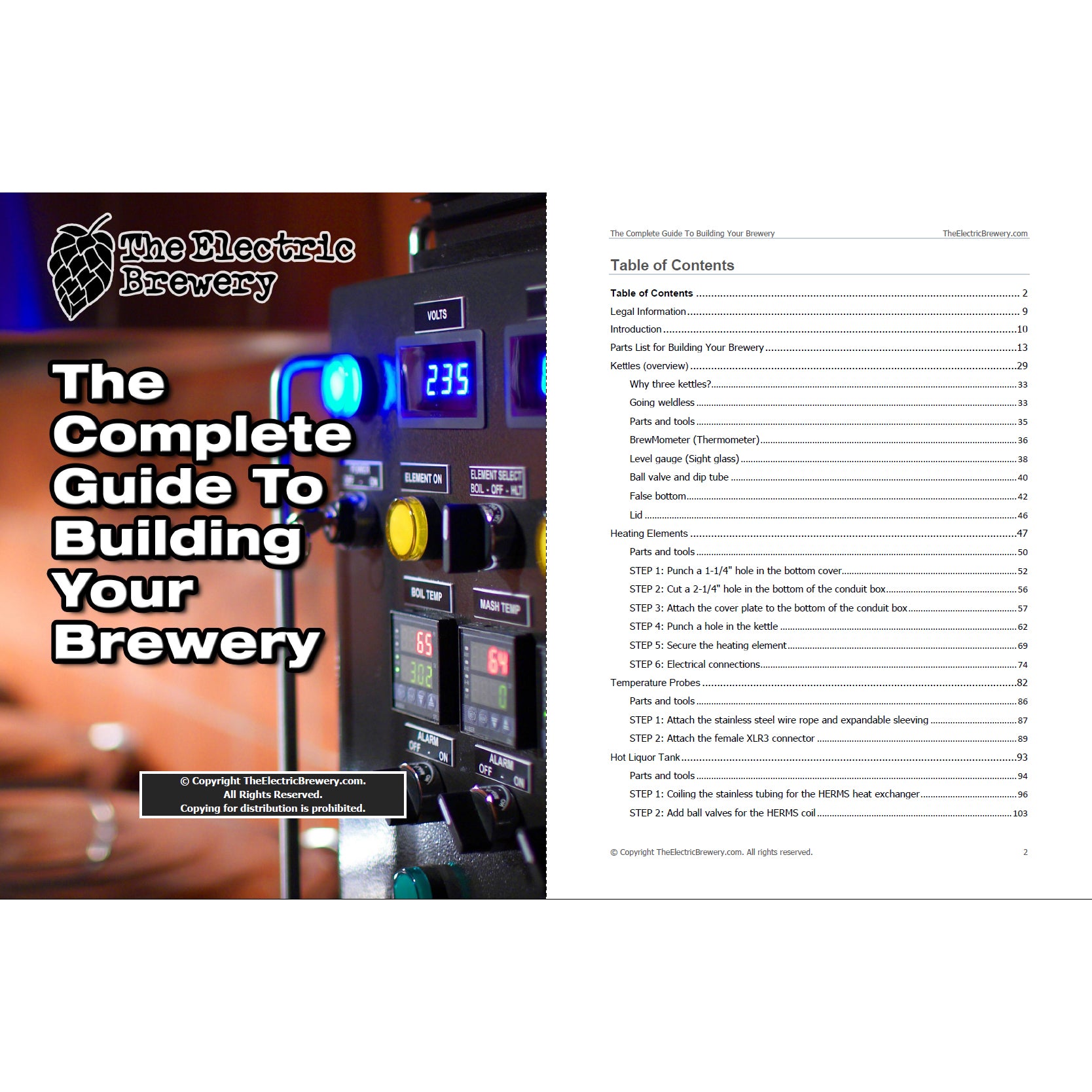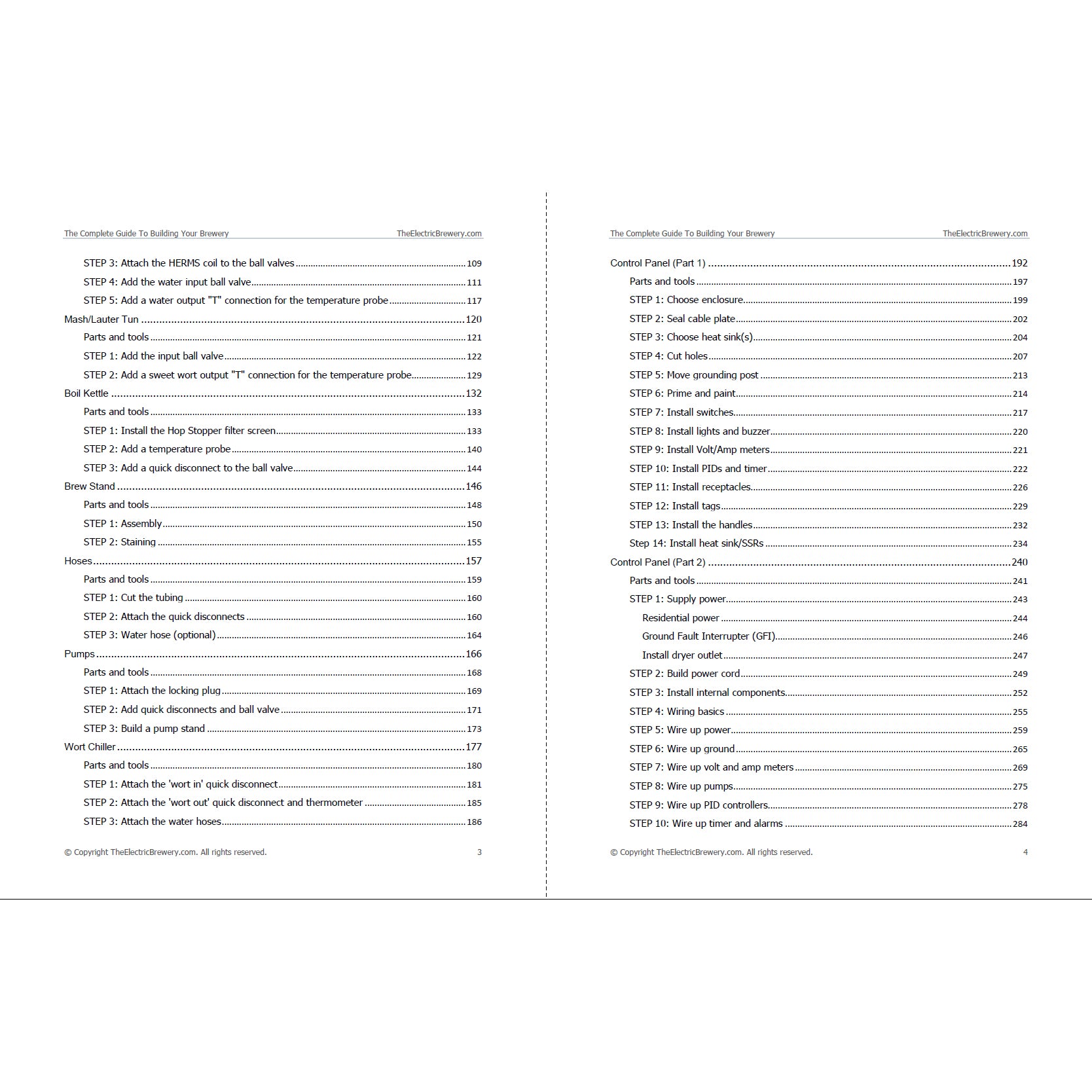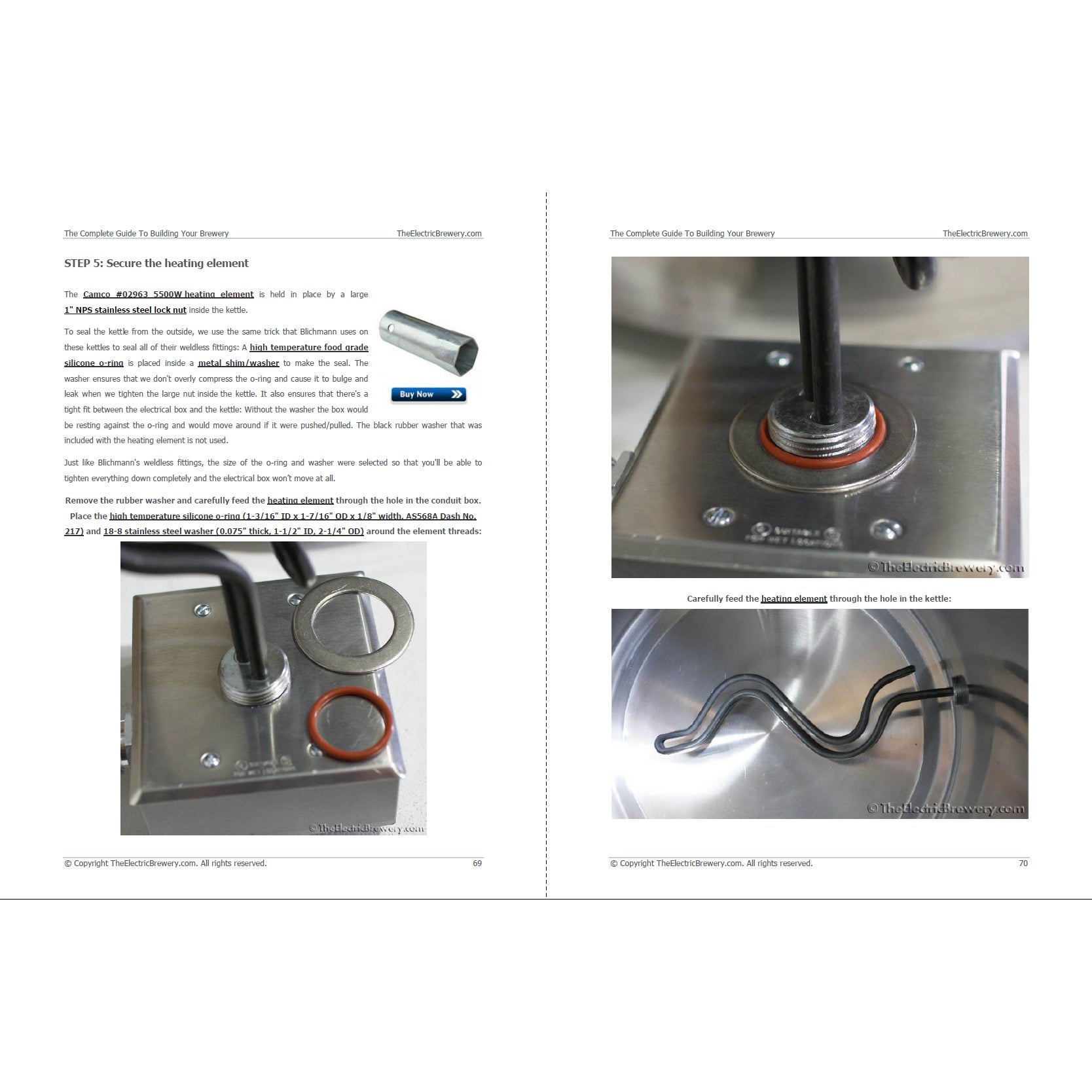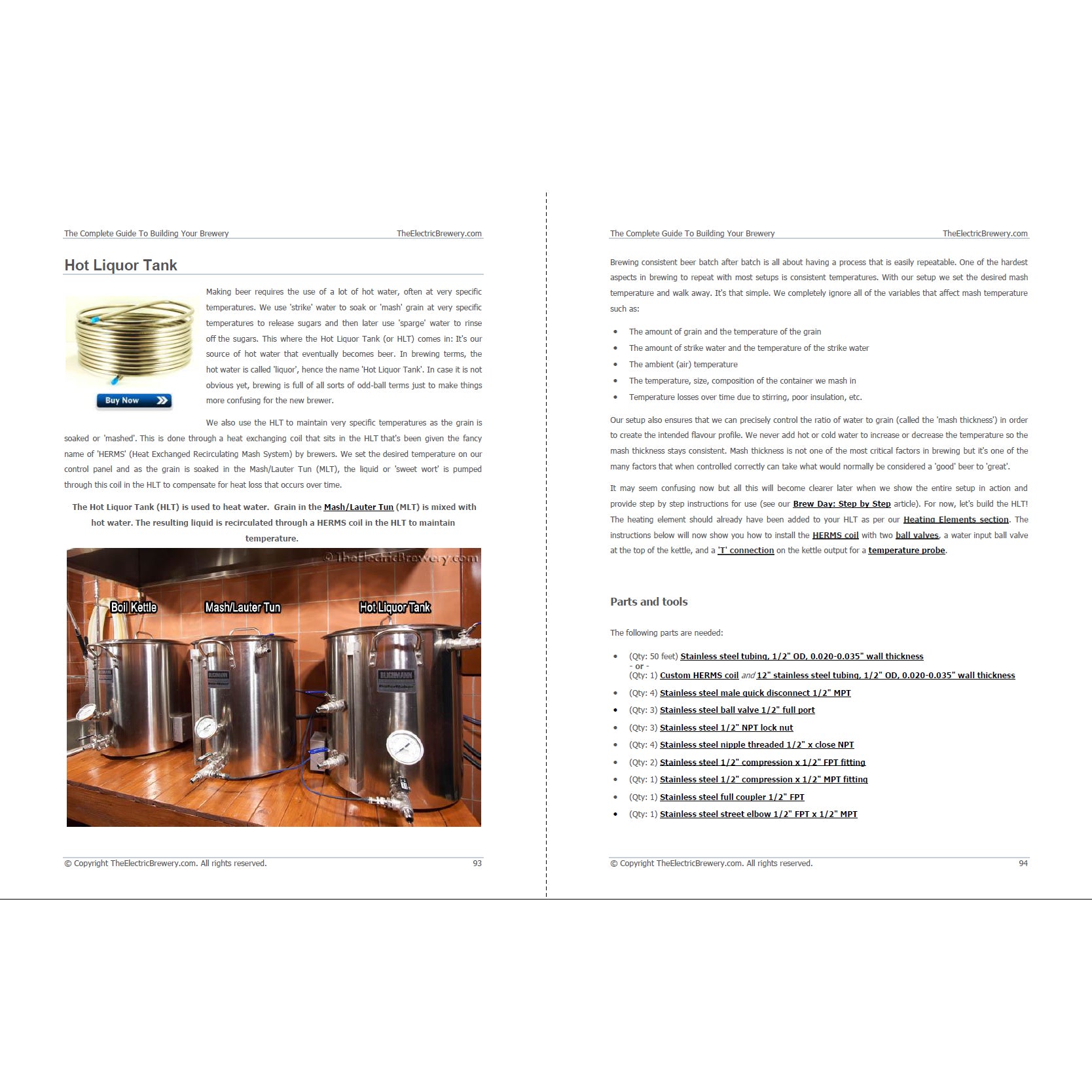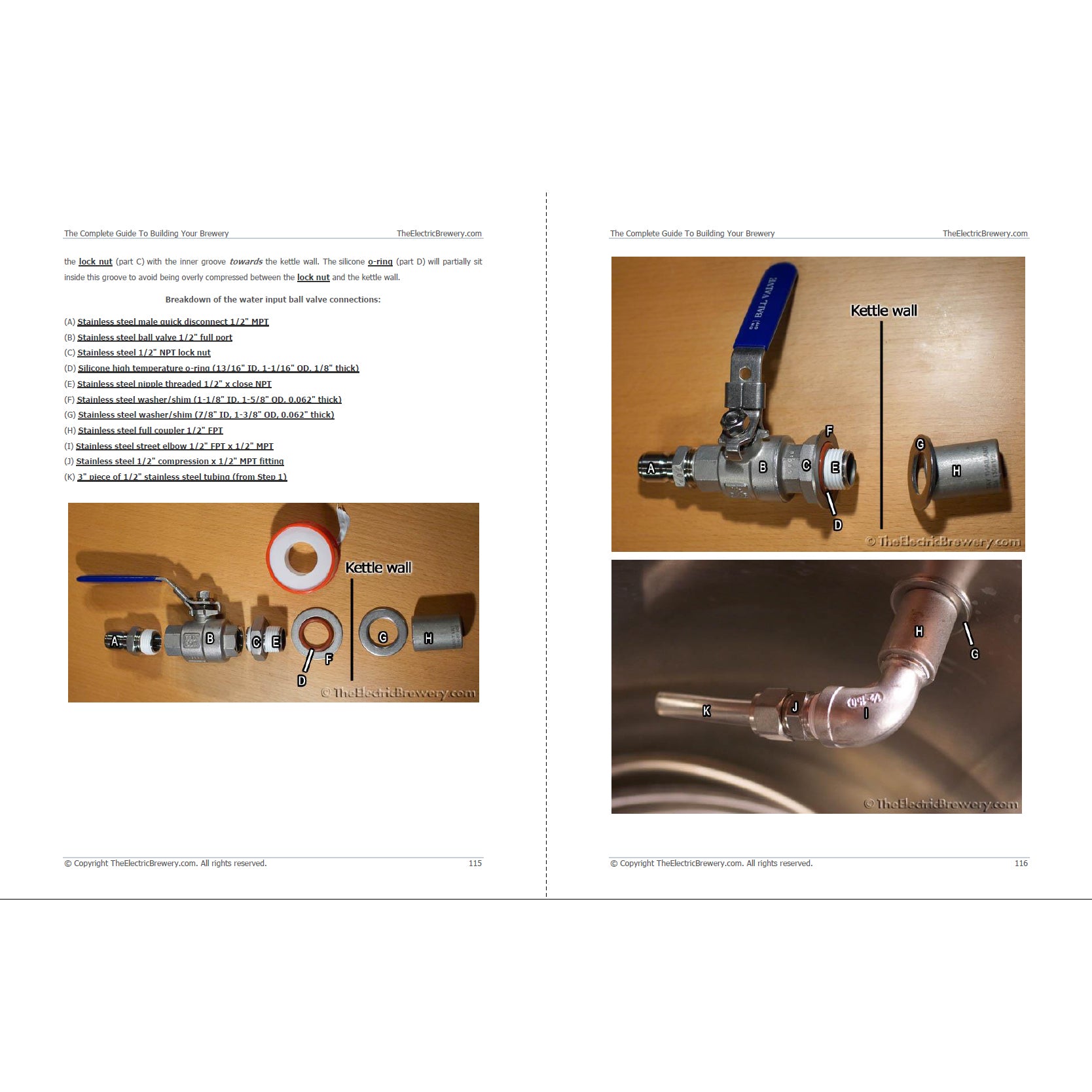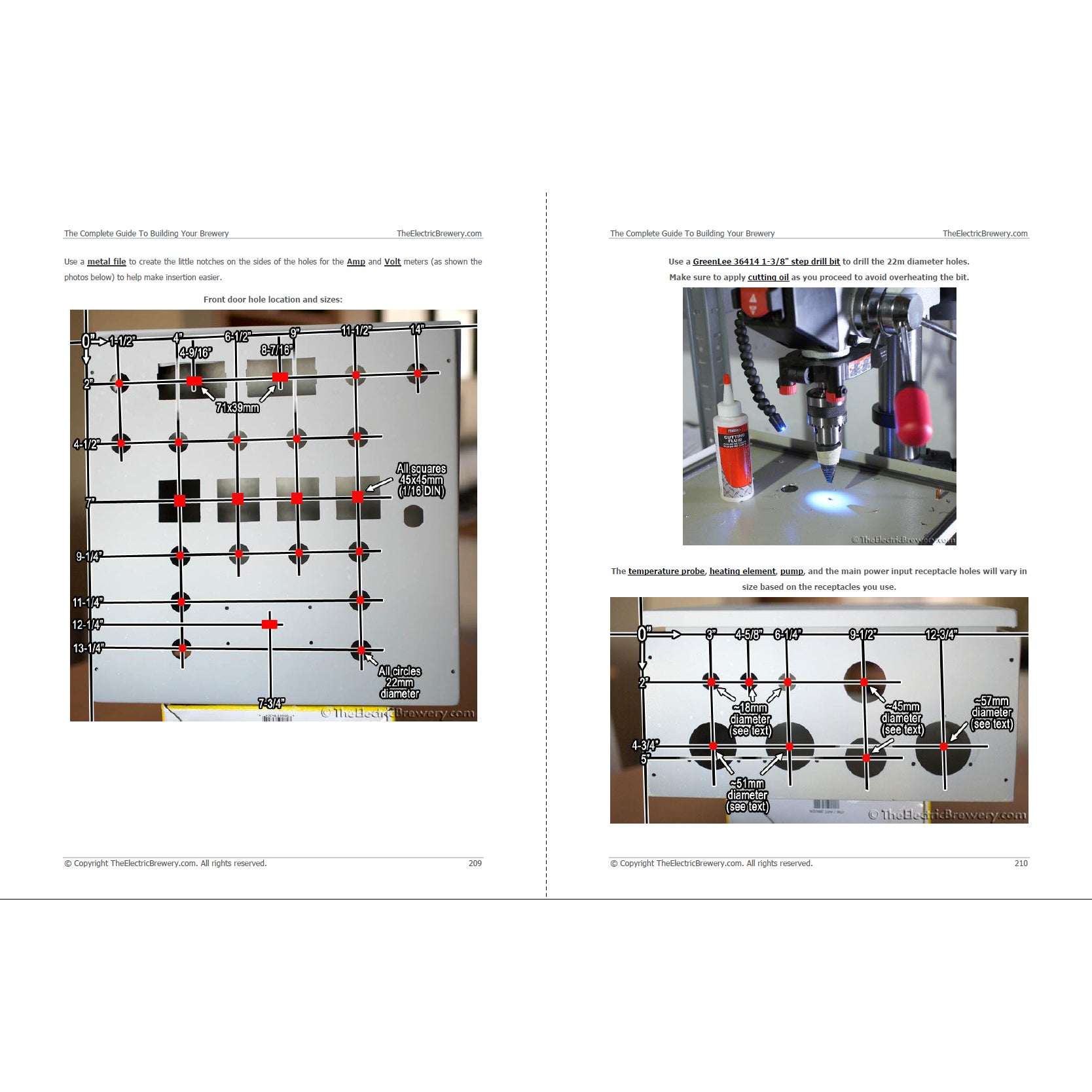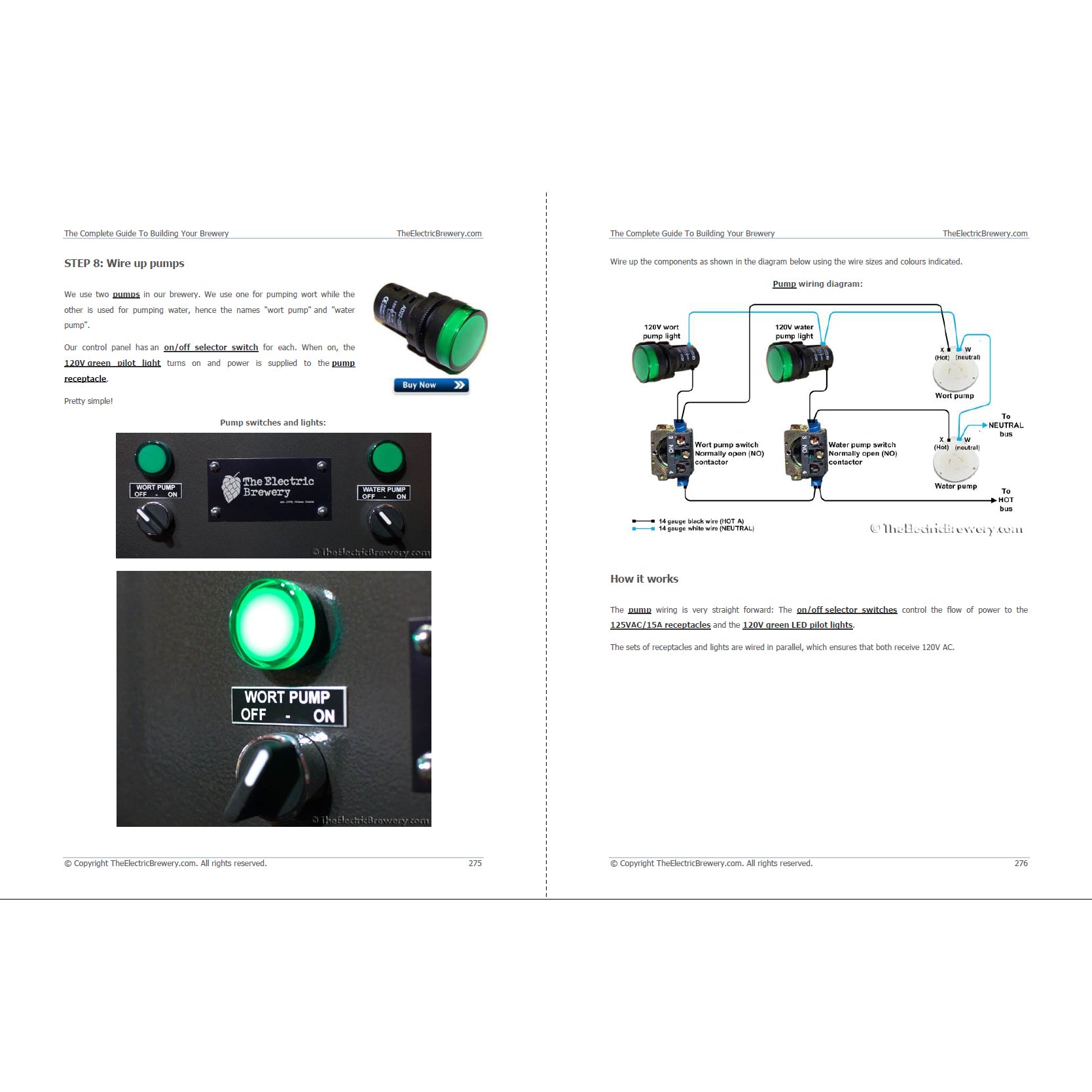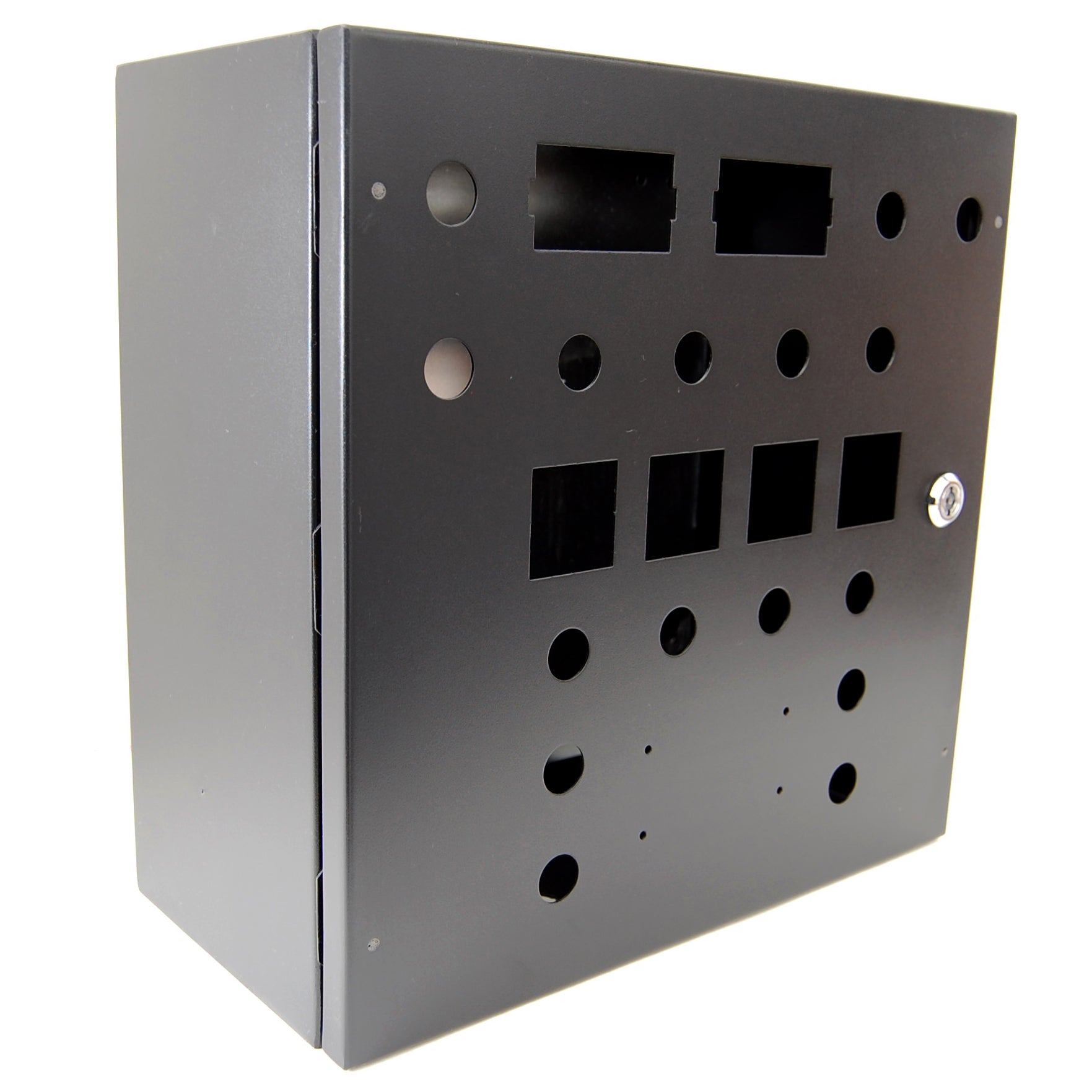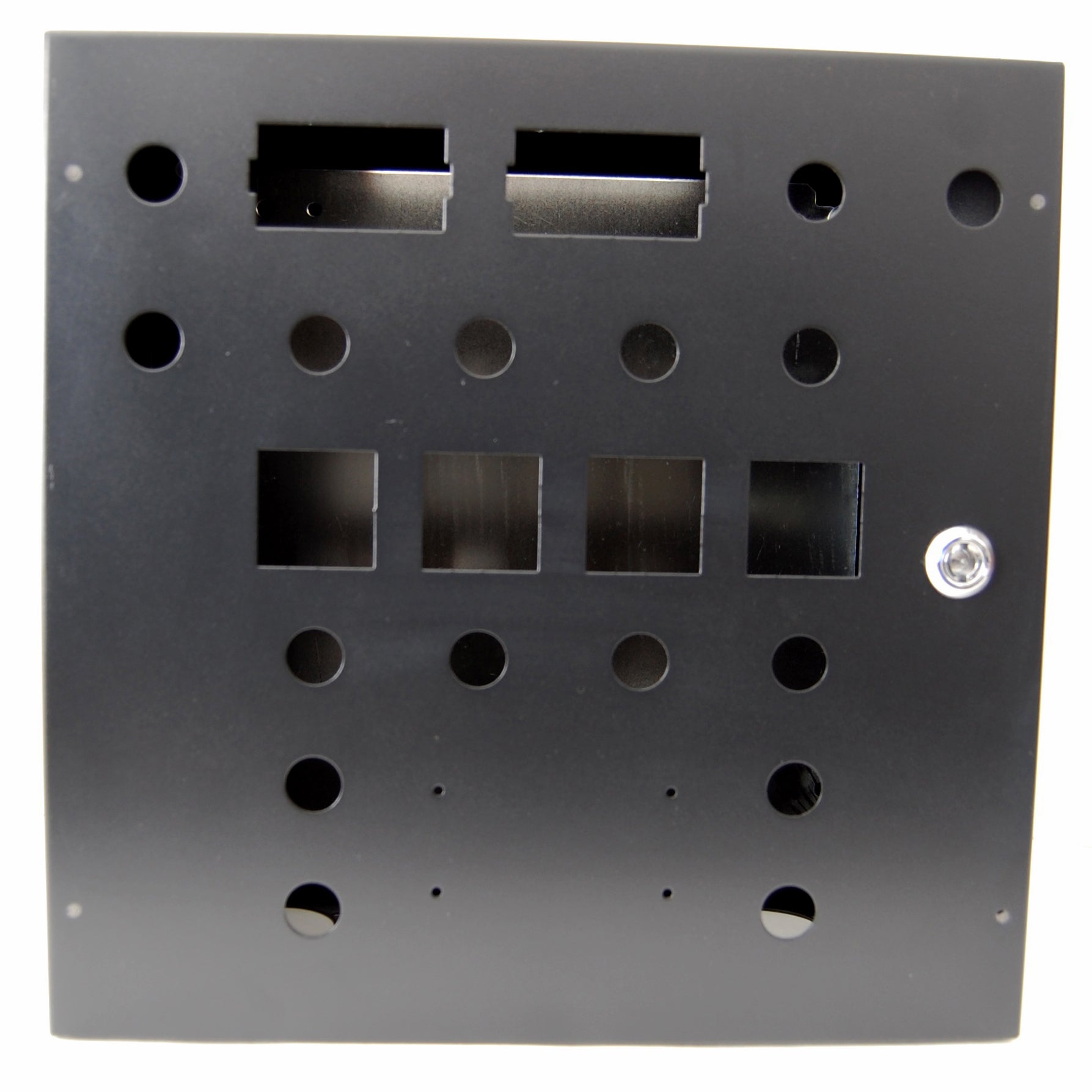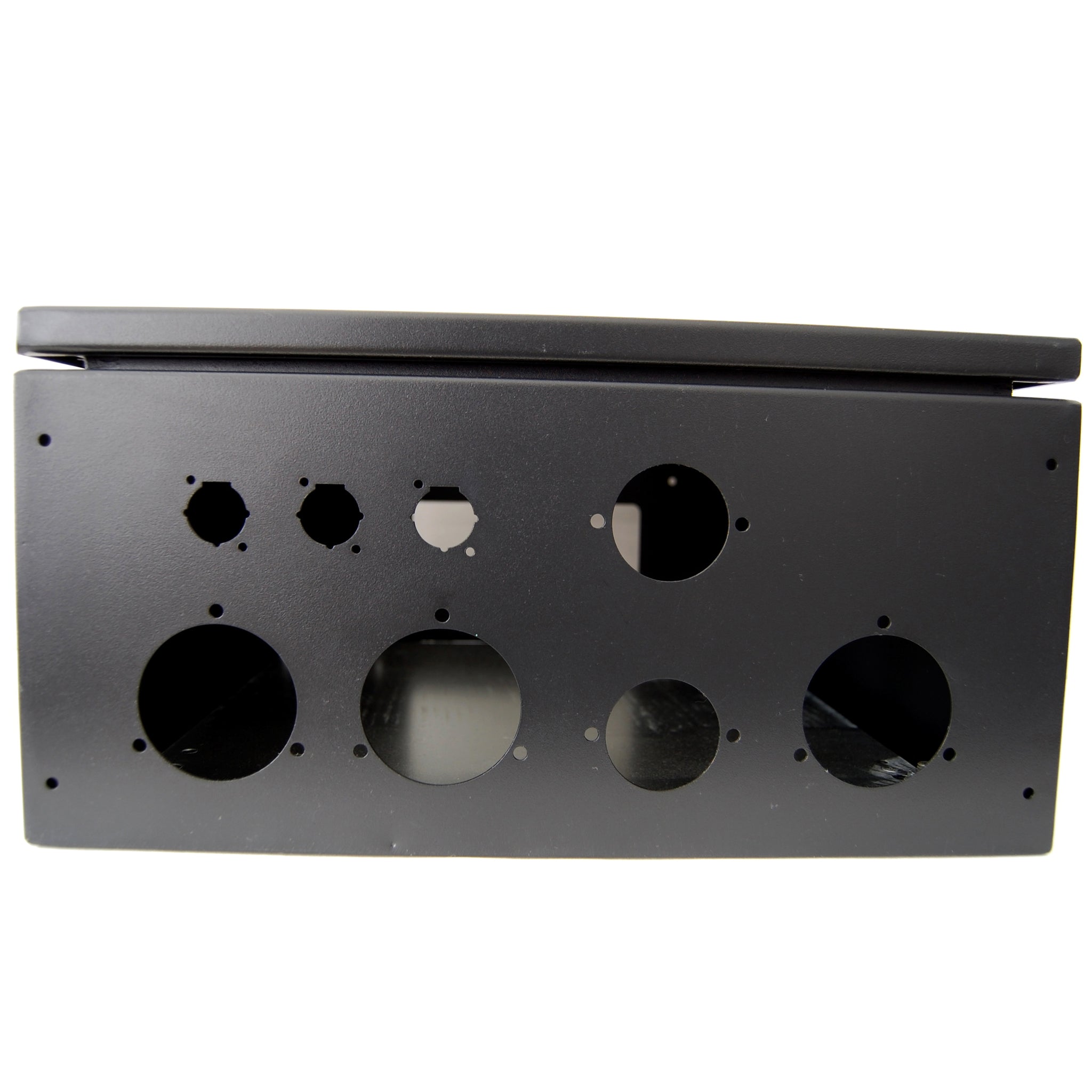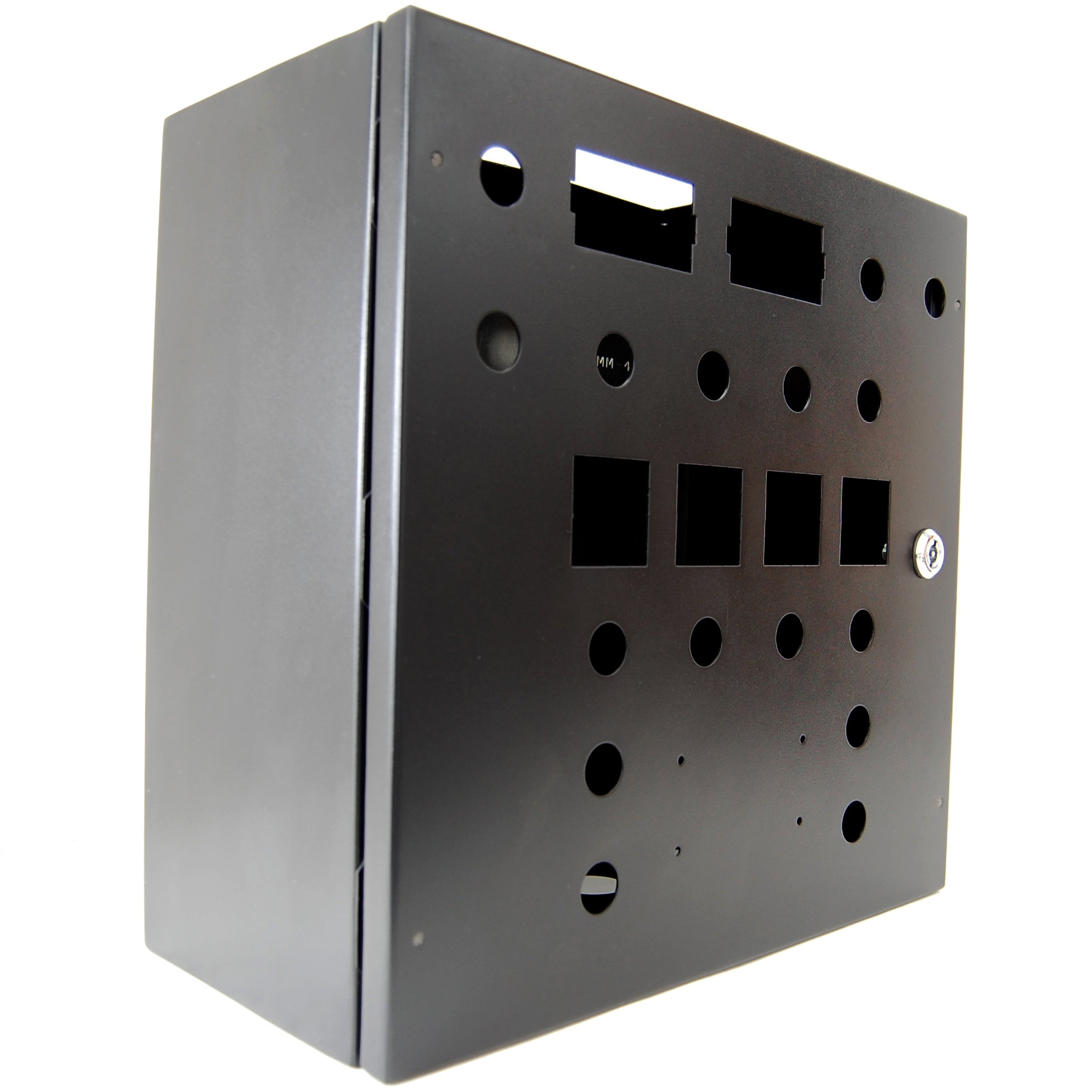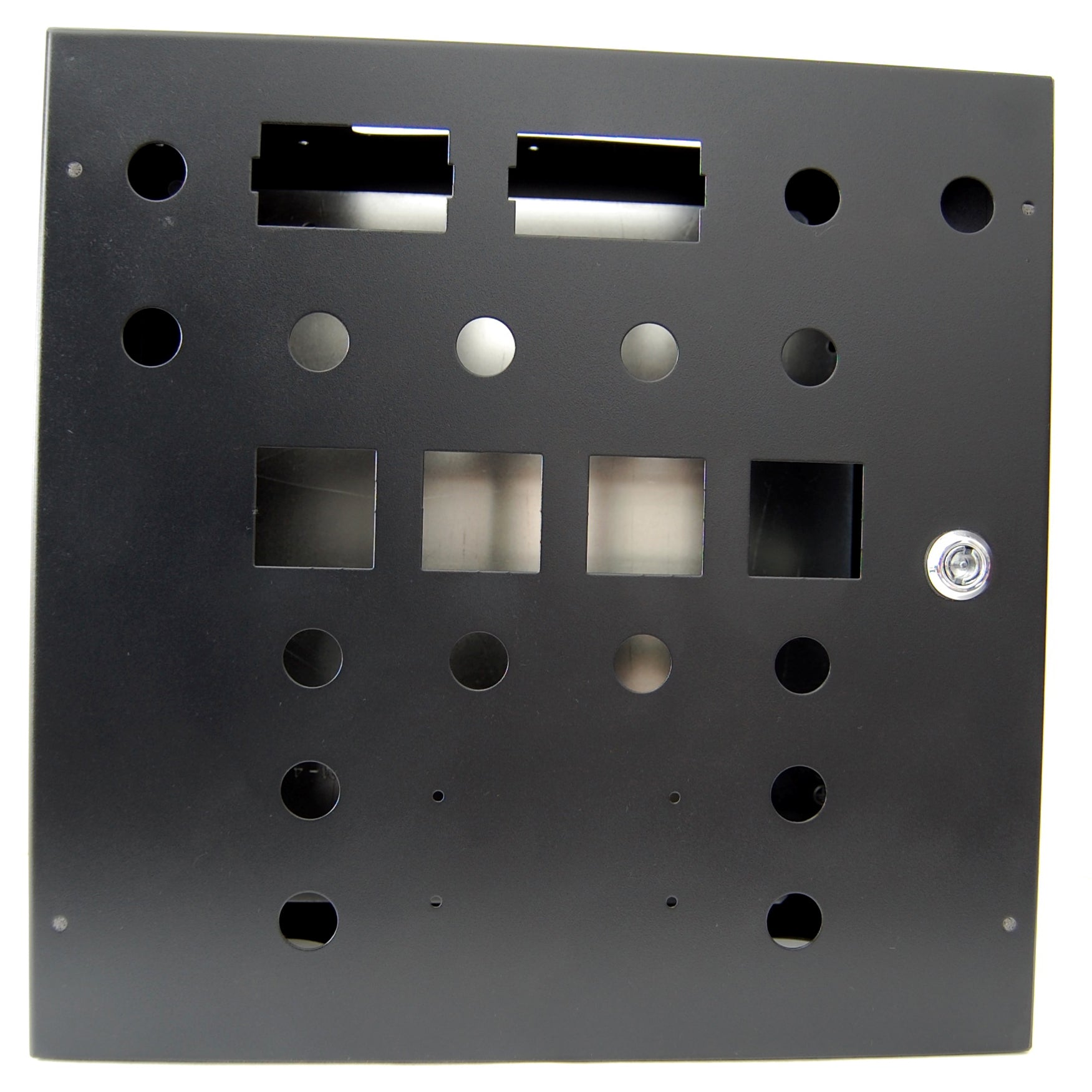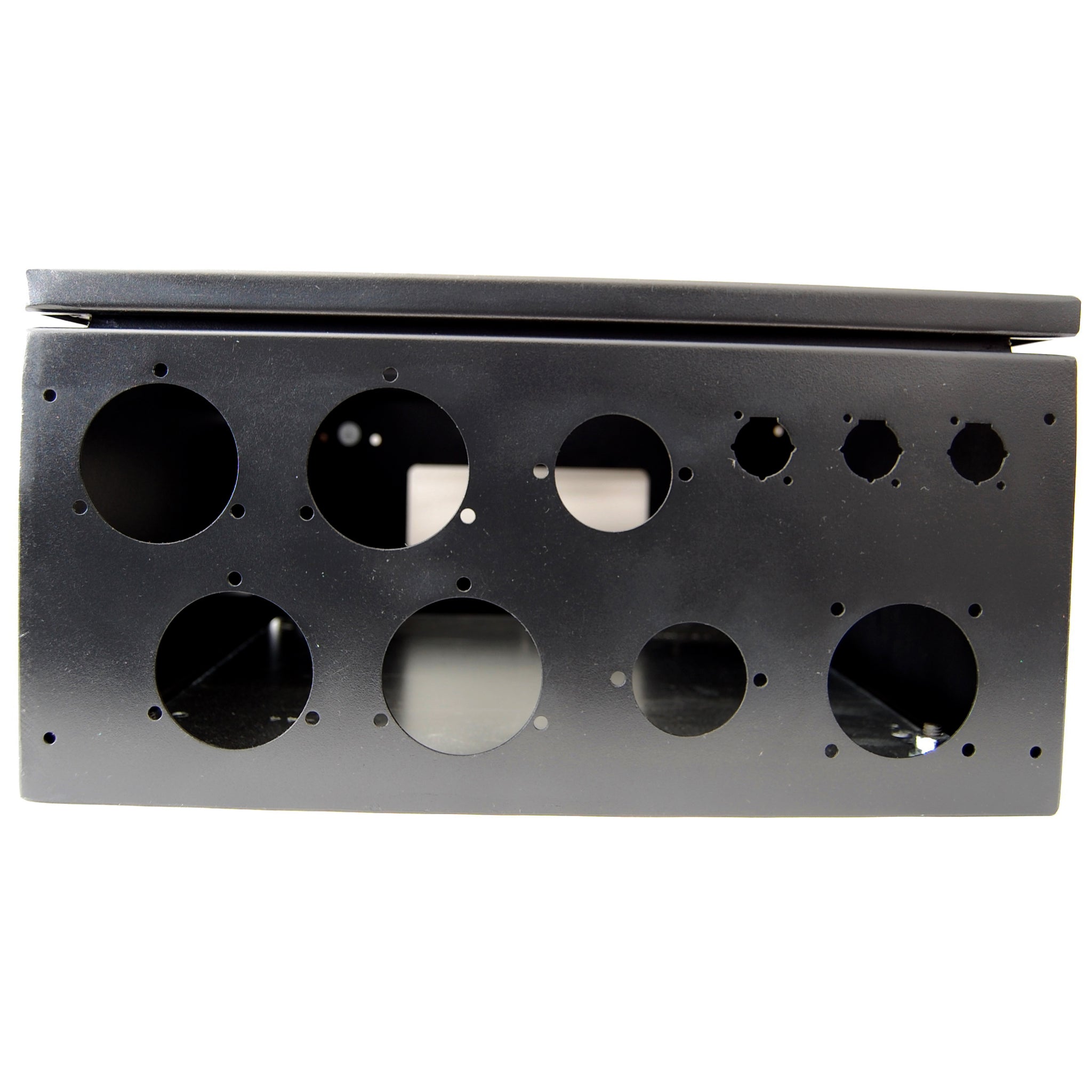Our heating element assemblies include only quality parts and feature:
- UL/CSA listed parts
- Available for worldwide use
- Ultra low watt density (ULWD) or low watt density (LWD)
- Elements with stainless steel base that will not rust
- Better sheath (tube) material made from a high performance nickel-chromium stainless steel (804) alloy with much better temperature and corrosion resistance than standard shiny 304/316 stainless steel elements
- Premium SJEOOW cord protected with expandable sleeving
- Tough industrial grade nylon locking plug (no cheap molded rubber that deforms / melts when overheated)
- Optional 1.5" or 2" Tri-Clamp adapter available. Please note that with Tri-Clamp fittings the size refers to the outside diameter of the tubing that it makes a connection for, not the flange diameter (the flat disc part). A 1.5" Tri-Clamp adapter has a flange diameter of 1.988" while a 2" Tri-Clamp adapter has a flange diameter of 2.52".
- Elements themselves are 1" NPS thread (national pipe, straight). Please note that due to manufacturing variances we can only guarantee fit with our adapters and fittings.
ULWD elements prevent the wort from being scorched or caramelized as the heat output is only 50W per square inch (7.8W per square cm) or less. ULWD also provides added safety as the element will not break instantaneously if fired "dry" (not immersed in water) by accident. Mistakes do happen so we recommend that ULWD elements be used whenever possible instead of LWD, especially when the element is in contact with wort. The high performance nickel-chromium 804 stainless steel alloy sheath used on these elements provides additional strength to resist dry firing.
Our heating element assemblies fit in any kettle wall and ensure a safe and secure fit using the same 100% weldless principles used by Blichmann Boilermaker kettles. There are no screw-on threaded fittings that need to be welded to your kettle. When done right weldless connections are tight fitting, never leak, never require any adjustments, and are safe. Our assemblies ensure that the entire kettle is electrically grounded in the same way any power tool or appliance chassis is grounded, with all wires well protected. For more information see our heating elements guide.
The heating element assembly may also be used in kettles that already have NPS or Tri-Clover (Tri-Clamp) fittings attached using our optional adapters.
How many heating elements do I need? What wattage?
The following sizes are available:
- Camco 02955: 4500W (240V), ripple, ultra low watt density (ULWD). 13.7 long from flange base to tip. For kettles approximately 13.5" in diameter or larger.
- Camco 02965: 5500W (240V), ripple, ultra low watt density (ULWD). 13.7" long from flange base to tip. For kettles approximately 13.5" in diameter or larger.
These ripple elements fit in any kettle with a diameter of at least 13.5" such as the 10-55 gallon Blichmann Boilermaker kettles and 'keggles' (15 gallon converted Sanke kegs used by many homebrewers).
All heating elements are somewhat flexible and can be carefully bent a bit if required. This is especially true of the ripple elements given that they come pre-bent with a wave.
Elements are used as follows:
- The Standard 30A Electric Brewery Control Panel and controls two (2) 4500-5500W heating elements.
- The 50A Electric Brewery Control Panel for back to back batches controls two (2) 4500-5500W heating elements.
- The 50A Electric Brewery Control Panel for 30+ gallons controls four (4) 4500-5500W heating elements.
Usage is the same with our Electric Brewery Control Panels meant for international use.
We recommend 5500W elements be used whenever possible for fastest heat times. One 5500W element provides enough heat to bring a typical 10-20 gallon batch to boil within a reasonable time frame. Two elements is recommended when boiling more than 30 gallons.
What are the heating elements made of?
The base of the heating elements is made of 304 stainless steel and will not rust. The grey/charcoal heating rods are made from the highest Grade Nickel and Chromium Incoloy (804 stainless steel) which is high temperature and corrosion resistant. It is essentially a mix of premium grade nickel and stainless steel. Incoloy is stronger, lighter and more corrosion resistant than standard 304/316 stainless steel. It will also not rust. High temperature resistance allows the heating element to resist damage in the event that it is fired dry (not in water) by accident.
The new stainless steel ripple heating elements are essentially the same Camco 02953/02963 ripple elements that we've been recommending and using for years, but now with a stainless steel base that will not rust such that a magnesium anode is no longer required.
Why is the element darker than shiny no name elements?
Our elements have small radius bends and must be annealed to form them. The annealing process causes the surface of the element to oxidize and darken. The shiny no name elements either have larger radius bends or they are made from a softer, more malleable material that does not require annealing. The alloy used in our heating elements requires more steps in the manufacturing process, but we believe it gives a superior product as it is stronger, lighter and more corrosion resistant than standard 304/316 stainless steel.
Aren't shiny 304/316 stainless steel heating element better?
No. The grey/charcoal 804 stainless steel rods on our heating elements are stronger, lighter, more corrosion resistant and about 8 times more expensive to manufacture than standard 304/316 stainless steel (see previous questions for more details). Many of the shiny 304/316 stainless steel elements that are sold are also not ULWD and not UL listed.
While we love and use shiny 304/316 stainless in our brewery on just about every other surface, this is one place where we chose to use the best product for the job: Grey/Charcoal coloured 804 stainless steel heating elements.
A typical no name Chinese heating element made from softer 304/316 stainless that is also not ULWD and not UL listed:
Our heating elements use the same resilient nickel-chromium stainless steel alloy sheath as the popular 02963 model that brewers have been using for years. The 02963 shown in the picture below has been in use for over 5 years and still looks like new: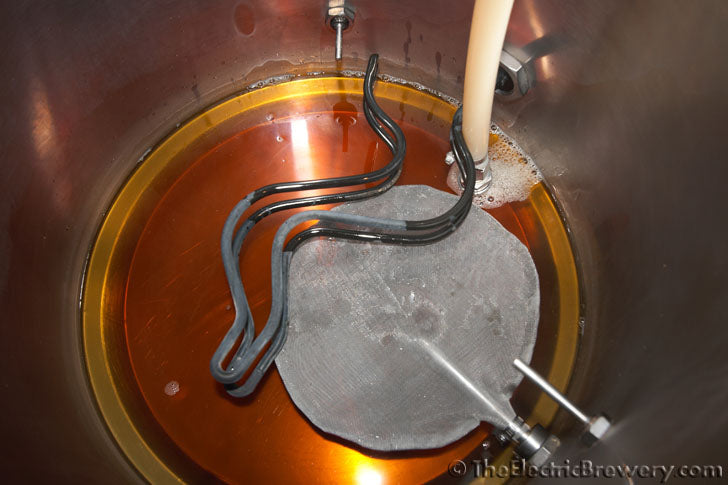
I want to replace my old elements with these ones but the nut inside the kettle seems rusted to the element. How do I remove it?
See our instructions: Replacing heating elements.
What sort of plugs are included with your heating elements?
The heating element cords come equipped with an industrial grade NEMA L6-30 (250VAC, 30A) twist lock electrical male plug to prevent accidental disconnection. We do not use cheap molded rubber plugs that deform / melt when overheated.
How long are the power cords? What are they made of?
Standard cord length is 10 feet, with 12, 15, 20 also available. Contact us for custom lengths.
We use premium SJEOOW cords that feature a thermoplastic elastomer jacket which means that the cable remains more flexible than standard (less expensive) cords. Rated to 300 volts and from -50 to 105 degrees Celsius. These cords are designed for use in harsh environments where the highest degree for oil / water / weather resistance and extended service life are essential. The cord is further protected with expandable sleeving.
What voltage do these heating elements work at? How many phases?
In order to produce the stated 4500W or 5500W power output, the heating elements require 240V AC, single phase.
They may also be run at lower voltage but the power output and current draw will be reduced. For example, running these heating elements at 120V produces one quarter of the rated power output at half the current draw. A 5500W element may therefore be powered from a standard 15 amp / 120V circuit to produce 1375W drawing 11.5 amps, while a 4500W element running off a 15 amp / 120V circuit would produce 1125W drawing 9.375 amps.
You may also use a single phase of a 208V or 400V 3-phase system: On most 3-phase 208V power systems 208V is available between any two of the phases (HOT lines) while on most 3-phase 400V power systems 230V is available between any of the phases (HOT lines) and NEUTRAL. At 208V, the 5500W produces 4133W and at 230V it produces 5053W.
Where can these heating elements be used?
Our heating elements may be used anywhere in the world. See previous question.
How does this heating element assembly compare to the Blichmann Boil Coil?
See this forum thread for our thoughts on the Boil Coil.
How low can I install the heating element assembly?
To allow enough for room on the outside of the kettle for the outlet box, the hole in the kettle needs to be at last 2-3/8" from the base of the kettle.
My kettle doesn't have any holes or fittings for elements. How do I attach the heating element assembly?
The DIY kit comes with parts to form a tight weldless fitting. Simply Punch a 1-1/4" hole in your kettle, and then secure the heating element assembly using the included washer, nut, o-ring, and (optionally) seal with the food grade silicone adhesive/sealant (also included).
My kettle has a 1" NPS welded fitting for an element. How do I attach the heating element assembly?
Simply screw the element and box on to the fitting. Make sure to use PTFE white / Teflon™ tape on the element threads to ensure a tight, leak-free fit (see this video) and seal on the inside of the box between the heating element and box cover with the food grade silicone adhesive/sealant (also included). See our secure the heating element assembly instructions for a picture. The washer, nut, and o-ring supplied with your DIY kit are not used.

My kettle has a Tri-Clamp (sometimes called Tri-Clover) fitting for an element. How do I attach the heating element assembly?
Specify your Tri-Clamp size (either 1.5" or 2") when ordering and we'll include a pre-fitted adapter already screwed on the element threads. To fasten the element to the kettle use a Tri-Clamp clamp and gasket (not included) as you would normally. The washer, nut, and o-ring are not used. Please note that we can only guarantee fit with our adapters. Tri-Clamp adapters sold by others may not fit.
I want to build my own heating element assembly. What's included in the DIY kit?
For each DIY kit we include the following:
- (Qty: 1) Camco 02955 4500W 240VAC ultra low watt density (ULWD) stainless steel rippe element
- or -
(Qty: 1) Camco 02965 5500W 240VAC ultra low watt density (ULWD) stainless steel ripple element
- or -
No heating element (for customers who purchased separately) - (Qty: 1) Weatherproof 2-gang outlet box
- (Qty: 2) Weatherproof 2-gang blank cover & gasket
- (Qty: 4) #6-32 hex nut
- (Qty: 4) #6 locking washer
- (10+ feet) Premium SJEOOW 300V 10/3 wire (10 gauge, 3 wires), oil/water resistant, rubber coating, rated for outdoor use
- (1 foot) 3/4" black heat shrink tubing
- (Qty: 3) 12-10 gauge 3/8" stud ring terminal (yellow)
- (10+ feet) 1/2" expandable braided sleeving - carbon colour
- (Qty: 1) NEMA L6-30 (250VAC/30A) twist lock electrical plug
- (Qty: 1) JB Weld cold weld compound
- (Qty: 1) Silicone high temperature o-ring (1-3/16" ID x 1-7/16" OD x 1/8" width, AS568A Dash No. 217, Durometer hardness A70, FDA compliant, -65F to +450F)
- (Qty: 1) Food grade silicone adhesive/sealant (-75F to +400F, Food grade: Meets MIL-A-46106B, Group I, Type I, FDA compliant, USDA approved, NSF 51 certified)
- (Qty: 1) Stainless steel washer/shim (0.075" thick, 1-1/2" ID, 2-1/4" OD)
- (Qty: 1) Standard straight cord/wire grip, 3/4" NPT (For cord diameter .50" to 0.63", aluminum, -30F to +225F)
- (Qty: 1) Stainless steel locknut 1" NPS
Every part is included except for spray paint (as paint cannot be sent through the mail). You supply the tools and the paint colour of your choice and follow our instructions. The box is not pre-drilled or pre-punched.
When building your own you'll need to supply the following tools and paint:
- (Qty: 1) Aerosol spray can of general purpose grey enamel primer (for priming metal)
- (Qty: 1) Aerosol spray can of hammered metal finish spray paint - silver colour (for painting metal)
- (1 foot) Electrical tape
- GreenLee 1-1/4" round chassis or radio (not conduit) punch for making 1-1/4" diameter holes
- ~57mm (2-1/4") bi-metal hole saw for making ~57mm (2-1/4") diameter holes
- Drill press
- Hand drill
- Metal file
- Phillips #2 (crosshead)screwdriver
- GreenLee 36414 1-3/8" step drill bit
- 5/32" high speed metal drill bit
- Adjustable wrench with 2" jaw opening
- Water heater element wrench
- Cutting oil
- Heat gun
- Sharpie permanent marker
- Wire cutter/stripper
- Double ratcheting wire crimper
- (Qty: 2) 3" Heavy duty C-Clamp
Assembly instructions are available in our Complete Guide to Building your Home Brewery or online here.
I'm using a different heating element. Why is the base rusting?
If using a different brand of element or the popular Camco 02963 model, the threaded silver coloured base of the heating element is not corrosion resistant and some rust may form on this base if water is left in the kettle for a prolonged period of time. These other heating elements are normally used in electric water heaters that also have a sacrificial anode installed to combat this issue. The anode's sole purpose is to oxidize first, thereby protecting the heating element base from rusting. Brewing kettles do not have an anode so make sure you do not leave water in the kettle for a prolonged period of time if using a heating element not specifically designed for brewing. This may be exacerbated if you have hard water. Some brewers will install a magnesium anode in the side of their kettle to combat this issue when using a different type of heating element. See this forum thread for some example installations and instructions.
Visit our official Heating Element Assemblies product thread in our forum.


